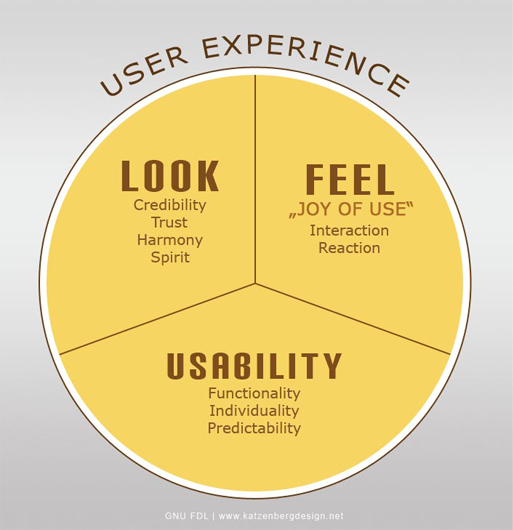In today’s competitive digital landscape, having a visually appealing website is no longer enough to stand out. To truly make an impact and attract valuable organic traffic, understanding the fundamentals of SEO-friendly web design is essential. This involves implementing responsive design to cater to mobile users, optimizing images for faster loading times, and incorporating SEO-friendly URLs for better search engine visibility. But it doesn’t stop there – key elements such as mobile-friendly design, proper header tags, and schema markup are crucial for a website’s success. The benefits are plentiful, from improved user experience to higher search engine rankings and increased website traffic. To achieve these benefits, it’s important to prioritize website speed, create high-quality content, and utilize internal linking. And once implemented, measuring the impact of SEO-friendly web design through monitoring keyword rankings, analyzing organic traffic growth, and tracking conversion rate improvements is key. Ultimately, integrating SEO-friendly web design with a robust content strategy and ensuring it for e-commerce websites are critical for success. Collaboration with a reputable digital marketing agency with SEO expertise can also provide invaluable insights and assistance in achieving SEO-friendly web design goals.
Understanding the Basics of SEO-friendly Web Design

Credits: dotcominfoway.com
So, you want to dive into the world of SEO-friendly web design? Well, buckle up because we’re about to take you on an exciting ride through the basics. First things first, let’s talk about the importance of responsive design. having a website that looks good and functions well on all devices is crucial. And that’s where responsive design comes in – it ensures that your site adapts to different screen sizes, providing a seamless experience for users.
Next up, we have optimizing images for faster loading. Picture this: you visit a website and instead of being greeted with stunning visuals, you’re stuck waiting for ages as images slowly load. Not exactly a pleasant experience, right? By optimizing your images, you can improve page load times and enhance user satisfaction. Plus, search engines love fast-loading websites!
Last but not least, let’s chat about incorporating SEO-friendly URLs. What are they exactly? Well, they’re clean and descriptive URLs that not only make sense to humans but also help search engines understand what your page is all about. This can lead to improved visibility in search results and ultimately drive more organic traffic to your site.
Key Elements of SEO-friendly Web Design

Credits: mobile1st.com
When it comes to creating a website that is optimized for search engines, there are several key elements to consider. One of the most important factors is ensuring that your design is mobile-friendly. With more and more users accessing websites from their smartphones and tablets, having a responsive design is crucial for providing a positive user experience.
Another essential element of SEO-friendly web design is the use of proper header tags. These tags help search engines understand the structure and hierarchy of your content, making it easier for them to crawl and index your site. By utilizing H1, H2, and H3 tags appropriately, you can improve the readability and organization of your web pages.
In addition to mobile-friendliness and header tags, implementing schema markup can also greatly benefit your website’s SEO efforts. Schema markup provides search engines with additional context about the content on your site, helping them better understand its relevance to user queries. This can lead to higher visibility in search results and increased click-through rates.
Benefits of SEO-friendly Web Design

Credits: medium.com
Embracing SEO-friendly web design not only enhances the overall user experience but also makes your website more appealing to search engines. By implementing a clean and organized structure, users can easily navigate through your site, ultimately leading to increased engagement and satisfaction.
One of the major perks of SEO-friendly web design is its ability to boost your search engine rankings. When your website is optimized for search engines, it becomes easier for them to crawl and index your content, resulting in higher visibility on search engine results pages. This heightened visibility can significantly increase organic traffic to your website.
Furthermore, an SEO-friendly web design opens the door to greater opportunities for exposure and growth. With increased website traffic comes a higher chance of converting visitors into customers or clients. By making strategic improvements to your website’s design, you are setting yourself up for long-term success in the digital landscape.
Best Practices for Implementing SEO-friendly Web Design
When it comes to creating an SEO-friendly web design, website speed is a top priority. Users want pages that load quickly, so optimizing your site’s performance can greatly improve its ranking on search engines. This means minimizing HTTP requests, reducing server response time, and enabling browser caching. By focusing on speed, you can enhance user experience and attract more organic traffic to your website.
Another essential aspect of SEO-friendly web design is creating high-quality content. Search engines prioritize websites with valuable and relevant information for users. By consistently publishing engaging and informative content, you can improve your site’s visibility in search results and establish authority within your industry. Whether it’s blog posts, videos, or infographics, producing compelling material will ultimately benefit both your audience and search engine rankings.
In addition to speed and content quality, internal linking plays a crucial role in enhancing the overall SEO-friendliness of your website. When you strategically link related pages within your site, you not only guide visitors through their journey but also help search engines understand the structure and hierarchy of your content. This leads to improved indexing and better ranking for targeted keywords. Therefore, implementing effective internal linking practices can significantly contribute to the success of your SEO strategy.
Measuring the Impact of SEO-friendly Web Design
Are you ready to witness the powerful impact of SEO-friendly web design? It’s time to roll up your sleeves and dive into the exciting world of monitoring keyword rankings. Watching those keywords climb higher and higher on search engine results pages is like watching your favorite team score a winning goal!
But that’s not all – get ready to analyze the organic traffic growth that comes with SEO-friendly web design. Seeing those website visitors pour in from search engines feels like throwing open the doors to a party where everyone wants to join in on what you have to offer. It’s an exhilarating feeling, knowing that more and more people are discovering your website organically.
And let’s not forget about tracking conversion rate improvements! As you implement SEO-friendly web design tactics, you’ll start to see those conversion rates soar. It’s like turning up the volume on success – every click, every purchase, every sign-up becomes another victory for your business.
Evaluating the ROI of SEO-friendly Web Design
Let’s talk about the incredible return on investment that comes with SEO-friendly web design. Picture this: your website is now optimized for search engines, leading to a boost in organic traffic. This means cost savings as you rely less on paid ads and see an increase in valuable, high-quality visitors.
But wait, there’s more! With improved user engagement from better search visibility and user-friendly design, you’re looking at higher conversion rates and increased customer satisfaction. These are the kind of benefits that make all your efforts worth it – after all, happy customers mean repeat business and positive word-of-mouth marketing.
And let’s not forget the long-term gains of SEO-friendly web design. The sustainable impact it has on your website’s ranking means continuous visibility and authority in your industry. So while others may be constantly chasing short-term tactics, you’ll be reaping the rewards of a solid foundation for years to come.
Integrating SEO-friendly Web Design with Content Strategy
When it comes to boosting your online visibility, integrating SEO-friendly web design with content strategy is the key to success. By aligning keyword optimization with content creation, you ensure that your website is not only visually appealing but also ranks high on search engine result pages. This means more traffic and potential customers for your business!
Furthermore, utilizing structured data for rich snippets can make a significant impact on how your website appears in search results. With the right markup, you can enhance your listings with additional information such as reviews, ratings, and product details – making it more enticing for users to click through.
And let’s not forget about leveraging internal linking for content visibility. By strategically linking relevant pages within your website, you can guide both users and search engines towards valuable content. This not only improves user experience but also signals the importance of specific pages to search engines.
Ensuring SEO-friendly Web Design for E-commerce Websites
When it comes to e-commerce websites, ensuring that your web design is SEO-friendly can make all the difference. Optimizing product pages for search engines means more visibility and ultimately, more sales. By implementing breadcrumb navigation, you’re not only making it easier for users to navigate your site, but also improving the overall user experience which can lead to higher conversion rates.
Utilizing sitemaps is another crucial element of SEO-friendly web design for e-commerce websites. It ensures that your products are easily discoverable by search engines, giving them a clear understanding of what your website offers. This can result in better rankings and increased organic traffic to your site. With these strategies in place, you’ll be able to stay ahead of the competition and drive more targeted traffic to your online store.
Collaborating with a Digital Marketing Agency for SEO-friendly Web Design
Working with a digital marketing agency to create an SEO-friendly web design is an exciting opportunity to take your online presence to the next level. With their expertise in search engine optimization, these professionals can help ensure that your website not only looks great but also performs well in terms of visibility and traffic.
By choosing a reputable agency with a proven track record in SEO, you can rest assured that your web design project is in good hands. It’s important to discuss specific SEO requirements with the agency so they can tailor their strategies to meet your business goals. Whether it’s improving site speed, optimizing content, or enhancing user experience, collaborating with experts will bring invaluable insights and solutions.
Take the time to review case studies of the agency’s successful web design projects. This will give you a clear idea of their capabilities and the potential benefits for your own website. The gains from investing in an SEO-friendly web design are immense, including improved rankings on search engines, higher organic traffic, and ultimately more leads and conversions.
At Digital Unicorn, we specialize in providing top-notch search engine marketing services for global and UK-based clients. Our agency, established since 2017, has a strong online presence and offices in both the UK (Wolverhampton) and India. With our expertise in digital marketing, we can help you reach your target audience and increase your online visibility. Whether you need SEO, PPC, or content marketing services, our team of professionals is dedicated to delivering exceptional results. Trust Digital Unicorn to take your digital marketing efforts to the next level and drive more traffic to your website.
Frequently Asked Questions
1. What is SEO-friendly web design?
SEO-friendly web design refers to the practice of creating and optimizing a website in a way that makes it easier for search engines to crawl, understand, and rank. It involves various techniques such as using clean code, optimizing page speed, creating mobile-friendly designs, and implementing proper URL structure.
2. Why is SEO-friendly web design important?
SEO-friendly web design is important because it helps search engines understand your website better, leading to higher visibility in search results. It improves user experience, increases organic traffic, and enhances the chances of ranking higher for relevant keywords.
3. What are the benefits of SEO-friendly web design?
The benefits of SEO-friendly web design include improved search engine rankings, increased organic traffic, better user experience, higher conversion rates, improved website speed, mobile-friendliness, and better accessibility for users and search engines.
4. How can I make my website SEO-friendly?
To make your website SEO-friendly, you can start by optimizing your website’s structure and navigation, using relevant keywords in your content, optimizing page load speed, creating mobile-friendly designs, ensuring proper URL structure, using descriptive meta tags, optimizing images, and regularly updating and improving your website’s content.
5. Can SEO-friendly web design improve my website’s ranking on search engines?
Yes, implementing SEO-friendly web design practices can improve your website’s ranking on search engines. By optimizing your website’s structure, content, and technical aspects, you can increase its visibility and relevance to search engines, leading to higher rankings for relevant keywords.
TL;DR: SEO-friendly web design is crucial for higher search engine rankings, increased website traffic, and improved user experience. Key elements include responsive design, proper header tags, and schema markup. It’s important to prioritize website speed, create high-quality content, and utilize internal linking. Collaborating with a reputable digital marketing agency with SEO expertise can help ensure successful implementation of SEO-friendly web design.

0 Comments